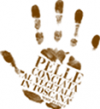The historical centre of Siena is simply wonderful. Here time seems to have stopped at the 13th century: people’s faces have changed, but the artistic and architectural essence of the city remains the same. UNESCO, when included it in the world heritage list in 1995, defined Siena as a “masterwork of dedication and inventiveness in which buildings have been designed to fit into the overall planned urban fabric“. But in the historic centre of Siena there is room also for the “engraved stones”, namely 11 stones realized by some contemporary artists who wanted to pay tribute to the city of Siena and its people.
The historical centre of Siena and 11 stones to discover
The 11 plates, or “engraved stones”, are located all along the historic centre of Siena: in order to find them it is necessary to have a bird’s eye view, concentration and a dose of good luck. The first artwork lies along Vicolo delle Scotte and was realized by Filippo Frosini, who wanted to represent the constellations within the perimeter of Siena. The second plate was realized by Alfredo Pirri and it is located near Basilica di Santa Maria dei Servi: a work which needs special attention to be understood, in fact it is written in the Morse alphabet and passes the word pax. In Piazzetta del Leocorno there are two stones with the sentence “The stones in language record the intervals of the world”: authors are Lidia Curti and Iaian Chamber. The interpretation of this phrase, according to authors, is free.
Erick Göngrich imagined two plates as blackboards and engraved them with the inscription “Sometimes monuments shoul be BOARDS with tulips”. The work is a reproduction of the artist’s notebook and it reproduces his own handwriting. At Giardini La Lizza we find the fifth incision realized by Anri Sala, an Albanian artist, and Edi Rama, Prime Minister of Albania, who quotes “Nuk e di si është për të tjerët, por raporti midis Kryetarit të Bashkise dhe zgjedhësve është si raporti midis artistit dhe spektatorit” which means “I don’t know how it is for the others, but the relationship between the Mayor and voters is like the relationship between an artist and the spectator”. But, why in this area of historic centre of Siena? It’s simple, it is the meeting point of the majority of the Albanian community who lives in the city.
In Piazza Matteotti, instead, Mario Avallone carved the phrase “Quality is precision in life“, while in the zone of Croce del Travaglio Eva Marisaldi carved “Come alone“, an invitatio to self-reflection and to an individual’s search for identity in one of the most frequented areas by passers-by. Inside the Santa Maria della Scala we find Alberto Garutti with his incision “All the steps I’ve made in my life have brought me here, now“. The works has a strong appeal to the road, in this case Via Francigena.
Talking about the historical centre of Siena it is impossible not to mention Piazza Duomo. It’s here that we find the incision of Luca Pancrazzi, a work that places Siena in the center of the two hemispheres through the representation of two equal and opposites vortices. Then, after a few steps, we are in Via Stalloreggi where was laid the work of Fabrizio Prevedello, made with a small gray slab of marble from the Apuan Apls
Finally, the journey ends in Piazzetta Silvio Gigli, where Arborescences appears, the work of the artist Michele Dantini and the musician Willy Merz. The engraving reproduces a piece of music of Merz and its name is a tribute to the nearby Botanical Garden. The idea, bust mostly the hope, of the artist is that someone would notice one day the work and try to play it. A simply wonderful gesture.


